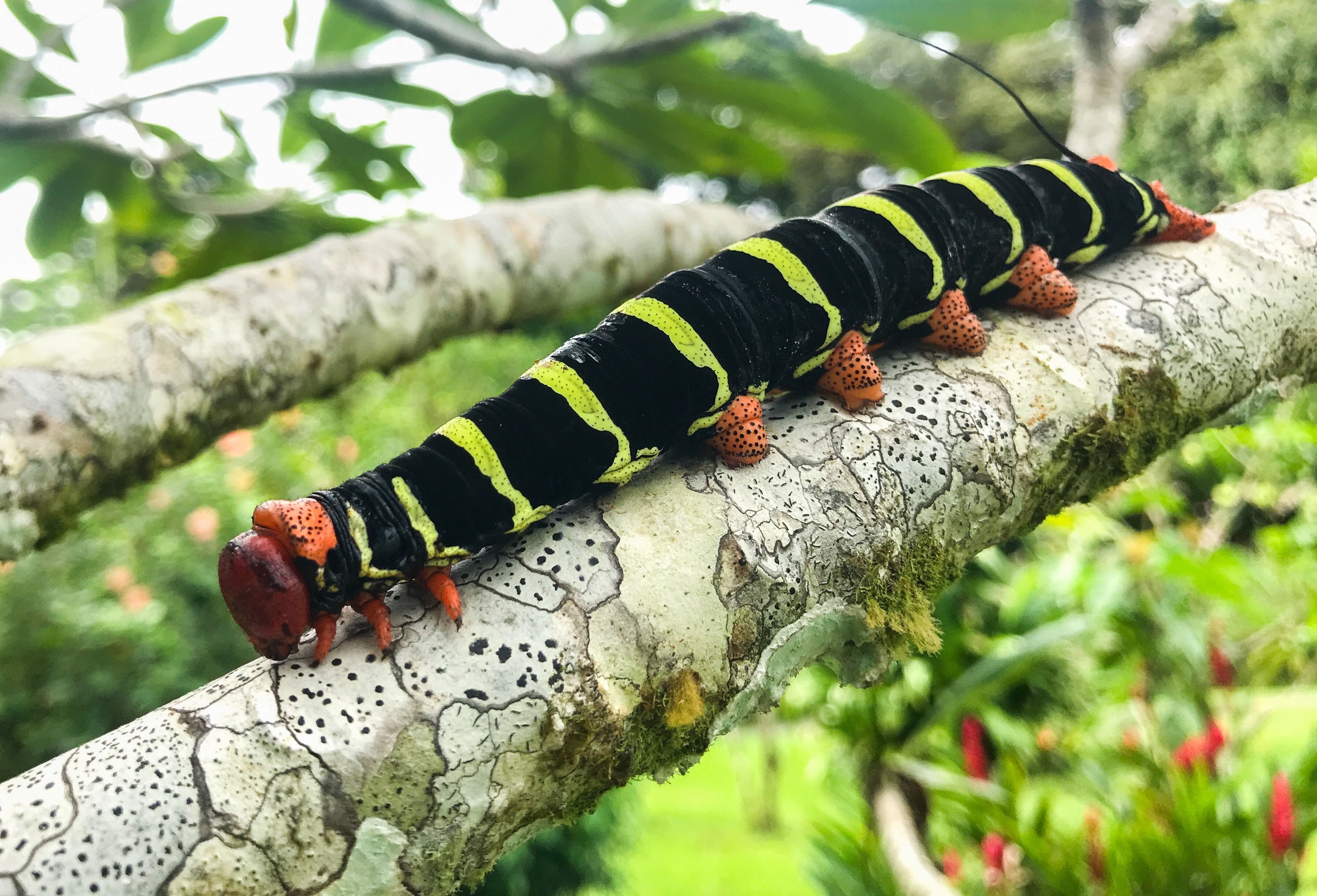Published May-29-2019
Caterpillar of the Tetrio Sphinx Moth
One look at this magnificently showy caterpillar gives warning to any potential predator by way of its brightly patterned body: Don’t eat me, I’m toxic! The frangipani hornworm, also called plumeria caterpillar, can be found crawling around on the clean, …

Stacey

One look at this magnificently showy caterpillar gives warning to any potential predator by way of its brightly patterned body: Don’t eat me, I’m toxic!
The frangipani hornworm, also called plumeria caterpillar, can be found crawling around on the clean, elegant branches of its namesake the plumeria tree (genus Frangipani). Oblivious to the world, this munching on the broad, fleshy leaves that form clusters at the end of otherwise bare branches.
The flowering plumeria tree might be best known for that gloriously delightful fragrance that wafts off of the famous Hawaiian flower necklaces (called “leis”) made with strings of these crisp, beautiful blossoms. While plumerias are native to various parts of the world, the white plumeria we have growing here at Tranquilo is indeed native to Central America.

The frangipani caterpillars hatch from clusters of 50-100 eggs lain under the broad, fleshy leaves of the plumeria which provide the caterpillars with an ample supply of food which they waste no time getting right to work on.
The leaves of the plumeria produce a white, toxic latex that the caterpillar is unaffected by and can sequester into its body as defense. This “aposematic” or warning coloration signifies that this creature is dangerous to eat while allowing it to go about its showy business in full view without fear of attack. Humans would be wise to leave them alone as well, not just for the fact of their toxicity, but they’re also known to bite and the small hairs on their bodies can cause irritation when inadvertently rubbed in one’s eyes.
As the tiny caterpillars methodically eat their way through leaf after leaf they can, in their efforts combined, ultimately ingest the entirety of leaves on the host tree, leaving bare sticks in their wake–in as little as a week! While this might seem as if these caterpillars are a pest and are harming the tree, this is a natural cycle created by co-evolution, the tree is not dead and the leaves and flowers will return, so don’t fear! Once the caterpillars have gorged themselves, reaching a hefty length of about six inches, they will descend to the ground below and bury themselves beneath the leaf litter.
So what comes next? From the ground emerges the Tertio Sphynx Moth, an aerodynamically formed, fast-flying moth from a family known for its ability to hover, allowing it to easily feed at flowers. What’s interesting is that, upon hatching, the moth is of course attracted to the delicious scent of the oleiferous plumeria flowers above. Well, wouldn’t you know that the tree that this caterpillar not long ago obliterated in its quest to gorge itself silly has now fooled the resulting moth into searching for nectar from a flower that produces not a lick of the sugary liquid! In fact, that intoxicating smell actually comes from scent nodules below the bud. Nonetheless, in its probing, the sphinx moth is carrying out the act of pollination that the plumeria tree needs to reproduce.
Just yet another wild and complex drama in the wonderful world that is the tropics!
